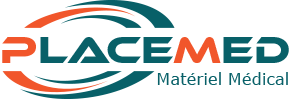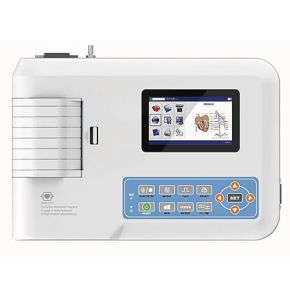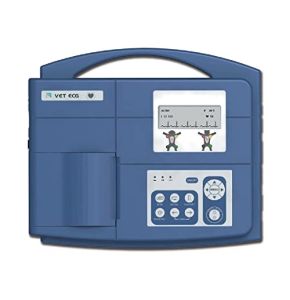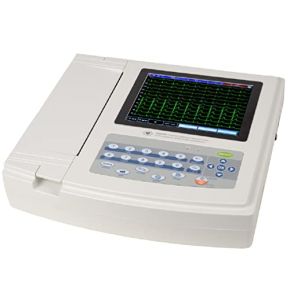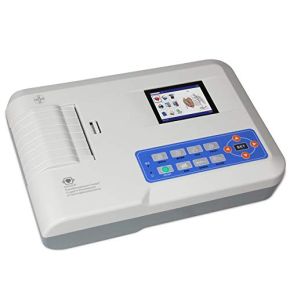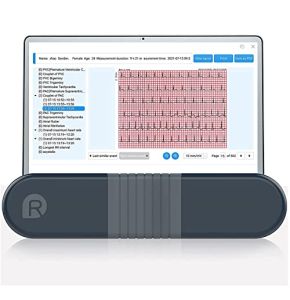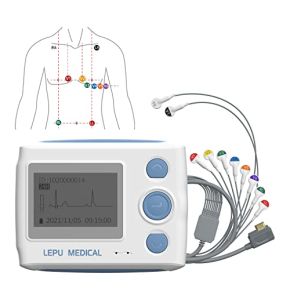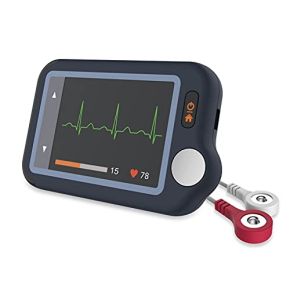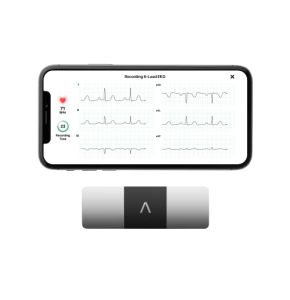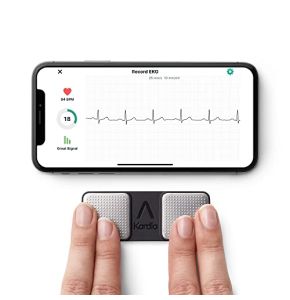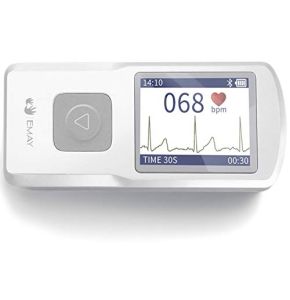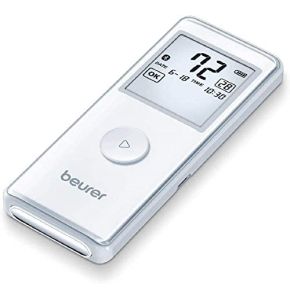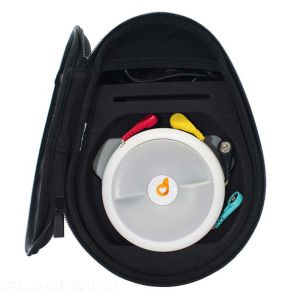Electrocardiograph
18/11/2024 388
18/11/2024 472
18/11/2024 389
18/11/2024 378
18/11/2024 480
18/11/2024 428
18/11/2024 512
18/11/2024 350
18/11/2024 413
18/11/2024 399
18/11/2024 392
18/11/2024 480
Electrocardiograph: Effectively Monitor Heart Health!
Welcome to Placemed, your hub for advanced cardiac solutions. In our "ELECTROCARDIOGRAPH" booth, we offer a selection of high-quality devices designed for cardiologists, emergency physicians, and all professionals involved in cardiac diagnostics. Electrocardiographs are essential tools for monitoring heart health and detecting early anomalies.
Explore our selection of high-precision electrocardiograph models now. These are selected from reputable merchants who offer world-renowned brands that are pioneers in innovation. Whether you are looking for 12-lead devices for comprehensive diagnostics, Holter systems for 24-hour cardiac monitoring, or cutting-edge wireless solutions for telemedicine, our booth has everything you need.
Each model in our collection is designed to offer reliable performance, ease of use, and exceptional diagnostic accuracy, enabling your medical team to detect cardiac anomalies with increased precision and provide personalized treatments to improve your patients' health and quality of life.
What is an ELECTROCARDIOGRAPH?
An electrocardiograph is an innovative medical device designed to record the heart's electrical activity. Used by healthcare professionals, it is essential for diagnosing and monitoring heart diseases. It works by capturing the small electrical signals generated by each heartbeat through electrodes placed on the patient's skin. These signals are amplified and transcribed into a tracing on paper or displayed digitally, allowing for a detailed analysis of various aspects of heart rhythm and function.
The history of electrocardiography dates back to the late 19th century when Dutch scientist Willem Einthoven invented the first usable electrocardiograph in 1903, a feat that earned him the Nobel Prize in Physiology or Medicine in 1924. Since then, electrocardiography technology has seen numerous advancements, with devices becoming increasingly precise, portable, and user-friendly.
Therefore, an electrocardiograph is a valuable tool in modern medicine, allowing doctors to detect a variety of cardiac conditions, including arrhythmias, myocardial infarctions, and many others. Today, it remains an essential element of cardiological practice, contributing to saving lives and improving cardiac care worldwide.
Why is the Electrocardiogram So Important in Cardiology?
The electrocardiogram (ECG) is a non-invasive examination that records the heart's electrical activity. It is indispensable for diagnosing various cardiac conditions such as arrhythmias, myocardial infarctions, and conduction disorders. An ECG can reveal anomalies even without apparent symptoms, allowing for rapid and effective intervention.
With the electrocardiogram, professionals can assess heart rhythm and rate, detect structural abnormalities, and monitor the effects of treatments. It is an essential tool for ensuring optimal patient care.
How Have Electrocardiographs Evolved to Digital?
Over the years, these devices have undergone major advancements. The first devices were bulky and difficult to move. With progress, they have become more compact and user-friendly. Today, digital electrocardiographs offer superior recording quality, better reliability, and advanced features.
Modern devices are equipped with touchscreens, long-lasting batteries, and significant storage capacities. They allow for rapid and precise data analysis, facilitating the work of professionals. Additionally, connectivity to computer networks improves information sharing and collaboration among medical teams.
What Are the Principles of Electrocardiography?
Electrocardiography is based on recording the electrical signals produced by the heart during its activity. Electrodes are placed on the patient's skin to capture these signals. The device then translates these signals into graphical tracings called electrocardiograms.
These tracings consist of different waves and intervals representing the phases of heart contraction and relaxation. The main waves are:
- P Wave: Atrial depolarization.
- QRS Complex: Ventricular depolarization.
- T Wave: Ventricular repolarization.
Correct interpretation of these waves and intervals allows for the detection of heart rhythm abnormalities, conduction disorders, and other issues.
What Are the Modern Technologies of Electrocardiographs?
Portable and Connected Electrocardiographs
Portable models are lightweight and easy to transport. They allow ECGs to be performed anywhere, whether in the clinic, at home, or on the go. Wireless connectivity facilitates data transfer to computers or electronic health systems.
These devices offer great flexibility to professionals, improving access to care for patients who cannot easily travel.
Real-Time Data Transmission for Telemedicine
Thanks to technology, it is possible to transmit ECGs in real-time remotely. Telemedicine allows specialists to interpret results quickly, even if the patient is far from the medical center. This is useful in emergencies or in rural areas.
Real-time transmission enhances the responsiveness of medical teams and can save lives in critical situations.
Automatic Analysis and Diagnostic Assistance Software
Modern electrocardiographs integrate software capable of automatically analyzing ECG tracings. These programs detect anomalies and alert professionals. They can identify arrhythmias, ischemias, or other cardiac problems.
These diagnostic assistance tools save time and improve the accuracy of analyses. However, they do not replace the physician's expertise.
What Are the Advanced Clinical Applications of Electrocardiographs?
Detection of Complex Arrhythmias
Advanced models can detect complex arrhythmias such as atrial fibrillation or ventricular tachycardias. Early detection of these anomalies is crucial to prevent severe complications.
These devices also allow monitoring the effectiveness of treatments and adjusting dosages if necessary.
Continuous Monitoring of High-Risk Patients
For patients with chronic heart diseases, continuous monitoring is often necessary. These heart monitoring tools can be used for regular follow-up, detecting changes in heart activity.
Some portable devices allow home monitoring, providing more comfort to the patient while ensuring constant medical vigilance.
Use in Prehospital Settings
In ambulances or isolated areas, portable electrocardiographs are essential. They allow paramedics to perform an ECG on-site, providing valuable information to medical teams before arriving at the hospital.
This improves patient care in emergencies by allowing adequate preparation of hospital staff.
How to Interpret Electrocardiogram Results?
Training Required to Interpret Complex ECGs
Interpreting an ECG requires specific training. Professionals must understand the principles of cardiac electrophysiology and know how to recognize anomalies.
Ongoing training is often necessary to stay updated with new knowledge and technologies.
Limitations of Automated Analyses
While automated analysis software is useful, it has limitations. It may miss certain anomalies or produce false positives. Therefore, results should always be reviewed by a qualified professional.
Human expertise remains indispensable for comprehensive interpretation.
How Do Electrocardiographs Integrate with Information Systems?
Recording in Electronic Patient Records
Modern electrocardiographs can be connected to electronic patient records. ECG results are recorded directly into the patient's medical file, facilitating access to information and monitoring the evolution of their health status.
This improves care coordination among healthcare professionals and prevents data loss or duplication.
Secure Data Sharing Among Professionals
Medical data security is a priority. This type of device and information systems comply with strict standards to ensure the confidentiality of information. Secure data sharing allows doctors, nurses, and other professionals to access the necessary information for better patient care.
Encryption protocols and controlled access ensure that only authorized individuals can view sensitive data.
How to Maintain Your Electrocardiograph?
To ensure the proper functioning and longevity of your device, it is important to follow some maintenance tips:
- Regular Cleaning: Clean the electrodes and cables after each use.
- Accessory Checks: Regularly inspect the condition of cables, electrodes, and batteries.
- Updates: For digital devices, perform software updates.
- Proper Storage: Store the device in a dry place away from dust.
Regular maintenance ensures optimal performance and significantly extends the lifespan of your cardiac monitoring device.
The electrocardiograph is an indispensable tool for healthcare professionals. It allows for the diagnosis and monitoring of heart conditions, contributing to saving lives. With technological advancements, these devices have become more accessible, precise, and user-friendly.
At Placemed, we are committed to providing you with the best cardiac devices to meet your needs. Explore our selection and equip yourself with quality devices to offer the best care to your patients. A healthy heart is essential, and with the right tools, you can make a difference.
 Francais
Francais 